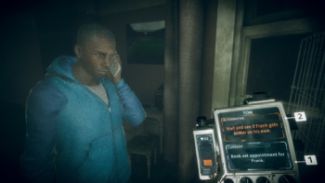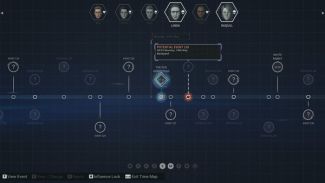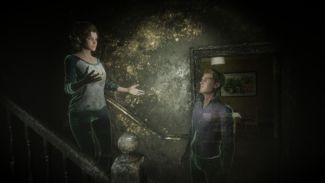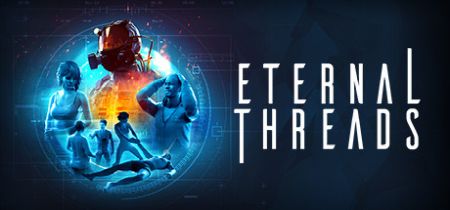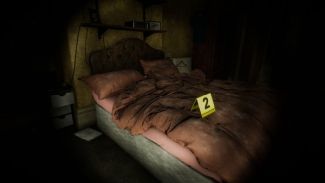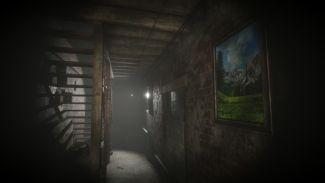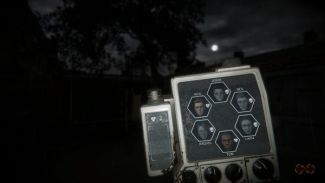|
By flotsam
Eternal Threads
Cosmonaut Studios / Secret
Mode
Who doesn’t like a bit of timey-wimey
stuff?
A house fire happened in the
North of England back in 2015, and you (as Operator 43) have been sent
back there by the Second Chance Project, a temporal agency tasked with
eliminating time corruptions and the ripples that will further poison
the time stream. Chronal radiation its called, and it isn’t nice. Which
as anyone knows is what happens when you start to mess around with time;
butterflies flap their wings and tornadoes wreak havoc elsewhere. So its
about more than simply saving the six occupants of that burnt out shared
habitation.
Stopping the fire won’t work, as
that will apparently make things even worse. Don’t ask why, it just
will. Much like those same butterflies, what you need to do is fiddle
with a bunch of more or less (depending) innocuous decisions the
occupants made over the course of the previous week, and which
can/might/will prevent their demise. For which the time line will thank
you.
While this game at first
confused me, going with its flow ultimately resulted in a rather
intriguing experience. Resist the temptation to perhaps be baffled by
how things work. Just do what you do with any adventure game; put one
foot in front of the other and take little steps, while you work out
what the game wants from you and how you might be able to provide it.
Eternal Threads takes place
largely within the house in question, immediately after the bodies have
been removed. Thanks to the technology at your disposal you can watch
the various things that went on there. Of which there are a lot - nearly
200 separate events, or 121 if you play the abridged mode. If you are
going to play, you may as well have the whole lot available (and its
apparently the only way to access all possible endings), but well-done
for having another option.
The space bar pulls up the Time
Map, essentially a timeline full of the relevant events, and it is here
that you manage things. When the game starts you get a little voice in
your ear from your future ‘handler’ (he remains with you throughout,
chiming in now and then with information or just a comment), who
explains the Time Map to you. Simplistically, it maps the actual events
on the current timeline that lead up to the final events for each of the
six residents and the resultant Conclusion Event (i.e., everyone dead),
as well as potential events from alternative timelines. What you do is
choose an event to watch, glean what information you can, and uncover
potential corruption points. You decide between which of two things to
do at those points (which might be leave things as they were), and
depending on what you do, events that were actual and things that were
potential might change state, moving into or out of ‘play’ and effecting
other events along the Time Map. This can also include introducing
corruption points into events that previously did not have them.
You can sort (for want of a
better word) the Time Map to help identify what event impacted whom, or
the events that particular residents (or combinations thereof) were
involved in. At every point you can see where you are with respect to
the six residents – are they still dead or alive as the timeline
currently stands? You can watch events again, change decisions you made
and then change them again, and filter to see events relevant to
particular residents. At all times you have complete freedom to move
along the line wherever time might take you.
Choosing to watch a particular
event will tell you where it took place. In the ‘real’ world, you then
make your way to that part of the house (room, hall, yard etc.) and once
there you trigger and watch what happened. It is during that observation
that you might have the option to change something, which might or might
not matter. Your hand held Visualiser will enable this, and provides
other relevant information (including if someone is now alive – it was
kind of neat when I got that first alert). Once an event is watched, a
short description will appear on the Time Map, and those that included
choices will be marked, making it easy to go back and review or
reconsider.
I took notes, as there were
times when I was sure I changed something that I then wasn’t satisfied
with, but changing it back didn’t put all things back the way they were.
I put it down to the ripples up and down the timestream at play. The
game autosaves as you go, so you can’t just restore your last version of
the timeline, which I thought accentuated the notion that fiddling with
things really matters. You can though have four different games on the
go should you want to.
The house is suitably dark but
reasonably detailed, and the participants in the triggered events have a
spectral translucency about them that suits the fact that they aren’t
really there. If it’s a little simplistic visually, it works well in the
context.
The real and virtual worlds
collide in other ways. There are a number of locked areas which you can
access if you learn where e.g., the key is kept and a safe to open if
you find the relevant code. There are other items you can examine which
relate to the lives of the occupants (letters, text messages and some
more personal items), which can flesh out their story and might tell you
something you can utilise in a decision you might make about them.
Personal items will also move around, related to the choices you make
(e.g., you might find certain things in the basement rather than where
they originally were if you make a particular early decision).
I thought that narratively it
was well done. To a certain degree it is really one big interactive
story, and it made me want to keep going. You could take issue with some
aspects of the writing, but again I thought that given the ages and
circumstances of the characters it was contextually appropriate. Ditto
the voice acting, even if it can be a little flat at times.
More mundanely, it plays in the
first person and you move with the keyboard and ‘steer’ with the mouse.
To me, its the most natural way to explore. You have complete freedom of
movement, and can look through 360 degrees with the mouse. Hotspots will
appear as you get close, first as small white triangles and when you
approach, a pop-up tab will appear that you can interact with. The space
bar pulls up the Time Map which you interrogate with the mouse, and
right click raises and lowers your Visualiser. It all works well.
As the Steam page says,
“relationships are treated as realistic,” so expect some swearing and
the sorts of other things people sharing a house might get up to.
Speaking of which, the various
intricacies of their lives is something else that you can possibly
change. The right ending has them not only all alive, but with their
“optimal future achieved.” So far I have saved them all, but they aren’t
all living their optimal lives. I have though watched the Mission
Complete event, which suggests a whole other situation and a possible
future outing with the Second Chance Project (and the Time Map remains
accessible to me should I want to explore those remaining optimal
lives).
I for one will play another
should it eventuate.
I played on:
OS: Windows 10, 64 Bit
Processor: Intel i7-9700K 3.7GHz
RAM: Corsair Dominator Platinum RGB DDR4 32GB
Video card: AMD Radeon RX 580 8192MB
GameBoomers Review Guidelines
August 2022
design copyright© 2022
GameBoomers
Group
 GB
Reviews Index GB
Reviews Index |
